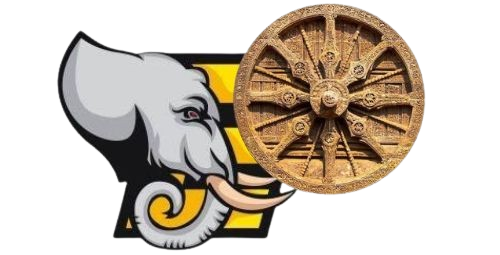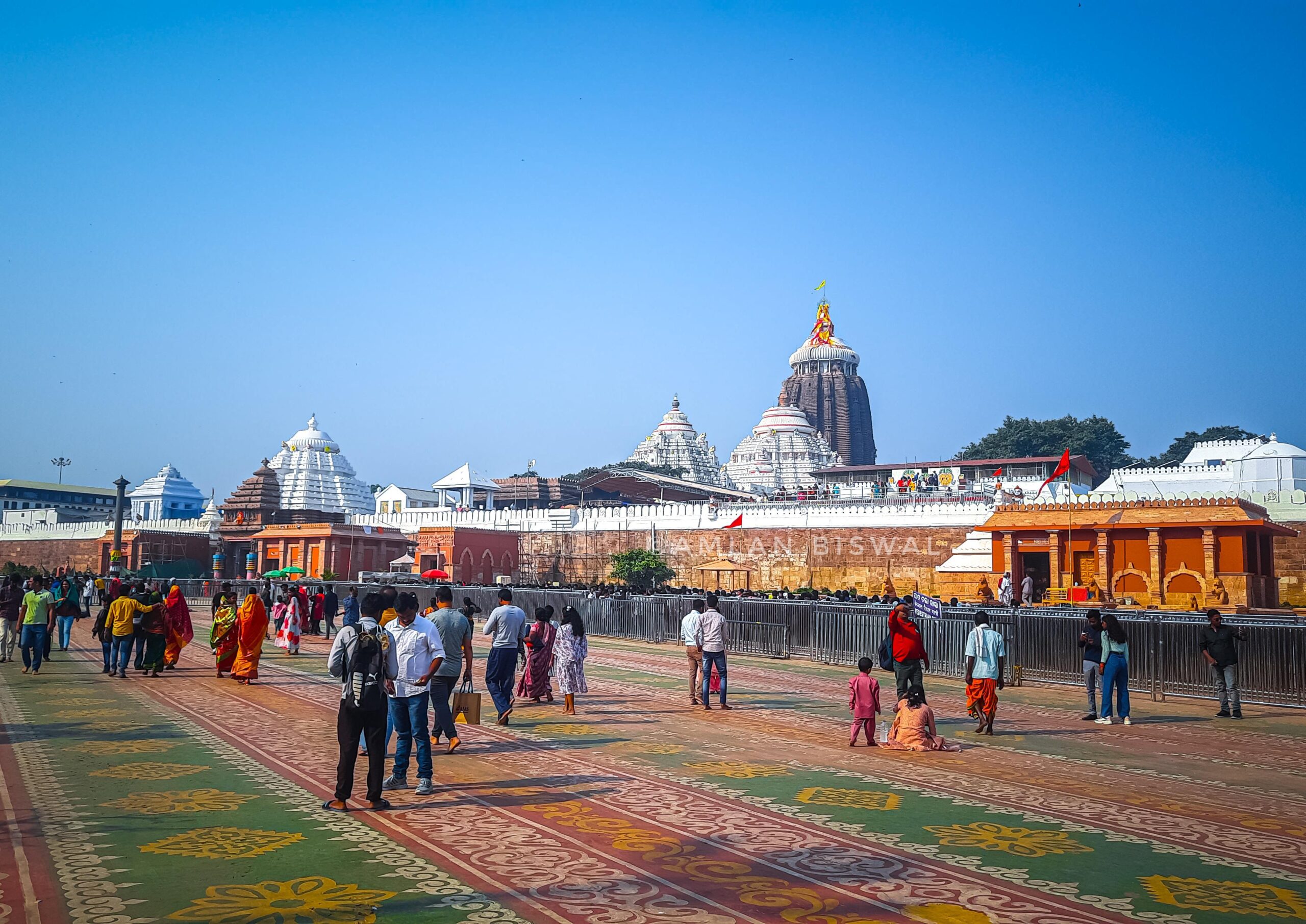The sacred temple of Lord Jagannath in Puri, Odisha, is not only one of the most significant pilgrimage centers in India but also a treasure trove of mysticism, sacred symbolism, and ancient wisdom. Among the many revered elements within the temple complex lies a living symbol of spiritual immortality and divine continuity — the Kalapabata, also known as Kalpa Brukhya.
Though less known to the general public than the towering spire of the main temple or the spectacular Rath Yatra, the Kalapabata holds deep religious, philosophical, and ecological significance. It is not merely a tree but a living manifestation of the cosmic wish-fulfilling tree, spoken of in ancient Vedic and Puranic literature.
This article presents every intricate detail of the Kalapabata tree — its origin, symbolism, myths, spiritual value, and unique historical place within the complex tradition of the Jagannath Temple.
What Is Kalapabata or Kalpa Brukhya?
The Kalapabata (alternatively spelled Kalpabata) is a massive, ancient banyan tree (Ficus benghalensis) located within the Jagannath Temple complex, specifically near the southern boundary wall, close to the Koili Baikuntha—the sacred garden where the idols of the deities are ritually buried during the Nabakalebara ceremony.
In Sanskrit, the name Kalpa Vriksha (Kalpa Brukhya) means the “eternal, wish-fulfilling tree.” In Hindu cosmology, this mythical tree is believed to grant any desire and is often associated with divine realms such as Indra’s paradise (Swarga). The Kalapabata of Puri is considered a terrestrial reflection of this divine tree, sanctified through centuries of worship, rituals, and myth.
Origin and Historical Roots
The origin of the Kalapabata is entwined with both natural history and sacred legend. Botanically, the tree is estimated to be over 500 years old, although many devotees believe it to be ageless, existing since the establishment of the Jagannath cult.
According to local legends and temple records:
- The Kalapabata existed even before the construction of the present-day Jagannath Temple in the 12th century by King Anantavarman Chodaganga Deva.
- It is said to have been part of the original forest landscape of Puri, once known as the ‘Nilachala Kshetra’—a region rich with sacred flora and revered as an abode of deities.
- The sages who worshipped Lord Jagannath in his primitive form (as Nilamadhava) are believed to have meditated under this very tree.
Thus, Kalapabata not only predates the architectural grandeur of the temple but is also a symbol of spiritual continuity, connecting tribal, Vedic, and Vaishnavite traditions that converged in Puri.
Symbolic and Philosophical Meaning
In Hindu scriptures, the Kalpa Vriksha represents abundance, sustainability, and divine benevolence. Its inclusion in Puri’s temple ecology reflects profound symbolism:
1. Symbol of Eternal Shelter
With its wide canopy and aerial roots, the Kalapabata provides physical and metaphysical shelter. It is said to represent Brahman—the infinite, offering refuge to all beings regardless of caste, creed, or background. Just as Lord Jagannath accepts all, so does the Kalapabata, under which devotees often meditate or pray silently.
2. A Cosmic Axis (Skambha)
According to Vedic cosmology, the Kalpa Vriksha serves as a cosmic pillar connecting earth and heaven. Its presence in the Jagannath Temple complex underscores the sacred idea that Puri is a “Kshetra” or divine field, where the human and divine realms meet.
3. Ecological Wisdom
As a living tree worshipped daily, Kalapabata reminds the faithful of the spiritual significance of nature. In an era of ecological degradation, it stands as a symbol of harmony between humanity and environment—a core idea of Sanatana Dharma.
Spiritual and Ritual Importance
1. Sacred Association with Nabakalebara
The Koili Baikuntha, where the Kalapabata stands, plays a crucial role during Nabakalebara, the rare ritual when Lord Jagannath and his siblings are given new wooden forms. The old idols are buried ceremonially near the tree, with Brahma Padartha (soul substance) transferred under its divine shadow.
Thus, the Kalapabata becomes a silent witness to the death and rebirth of divinity—a sacred transformation believed to occur under its guardianship.
2. Place of Ancestral Offerings
Devotees often perform ‘Pinda Dana’ (ancestral rites) under the tree, especially during Pitru Paksha and special tithis. It is believed that offering prayers under the Kalapabata brings moksha (liberation) to the departed souls, aided by the cosmic energy of the wish-fulfilling tree.
3. Rituals and Daily Worship
Kalapabata is not a passive symbol—it is actively worshipped every day. Devotees circumambulate the tree, tie sacred threads to its branches, and whisper wishes believed to be carried to Lord Jagannath through the divine tree’s roots and leaves.
Myths and Legends Associated with Kalapabata
The tree features in several local legends, often narrated by temple priests and Puri locals:
- It is believed that Lord Jagannath Himself meditated under this tree in one of His earthly leelas, blessing it with spiritual potency.
- Some tales claim that sage Narada and Lord Brahma once visited the spot and meditated under the Kalapabata to receive divine revelations.
- In oral traditions, it is said that the tree grants inner peace, and wishes made with pure intention under its shade always come true.
Kalapabata in Literature and Culture
The Kalapabata has been referenced in Odia poetry, palm-leaf manuscripts, and spiritual texts. In the writings of poets like Banamali Das, the tree is referred to as a silent witness of divine secrets hidden within the Nilachala Kshetra.
Additionally, in pattachitra paintings and temple murals, the Kalapabata is often depicted as a tree standing over scenes of sacred rituals, emphasizing its integration into the visual theology of Jagannath culture.
Preservation and Contemporary Relevance
Given its age and spiritual significance, the Kalapabata is treated with utmost care:
- The Archaeological Survey of India (ASI) and Jagannath Temple Administration have jointly implemented preservation strategies.
- It is now surrounded by protective barriers to ensure that the roots are not trampled.
- During extreme weather or cyclones, special rituals are conducted to seek protection for the tree.
In the modern context, Kalapabata stands not only as a symbol of spiritual aspiration but also as a reminder of India’s ancient ecological consciousness—where trees are worshipped, not felled; where nature is revered, not exploited.
Conclusion
The Kalapabata (Kalpa Brukhya) of the Jagannath Temple in Puri is more than a sacred tree—it is a living legend, a symbol of timeless divinity, and a bridge between the human and the eternal. From sheltering sages and rituals to witnessing divine transformations, the Kalapabata has silently stood through centuries as a pillar of spiritual endurance.
Its roots run deep into the soil of India’s sacred geography, while its branches stretch into the collective soul of millions who seek hope, renewal, and fulfillment. In the divine company of Lord Jagannath, this sacred tree continues to flourish—not just as a botanical wonder, but as an eternal emblem of divine grace.




